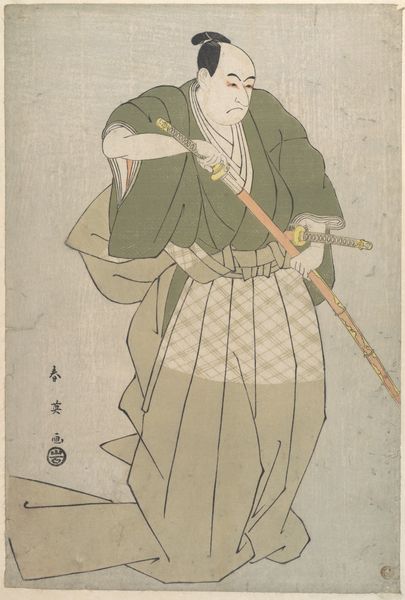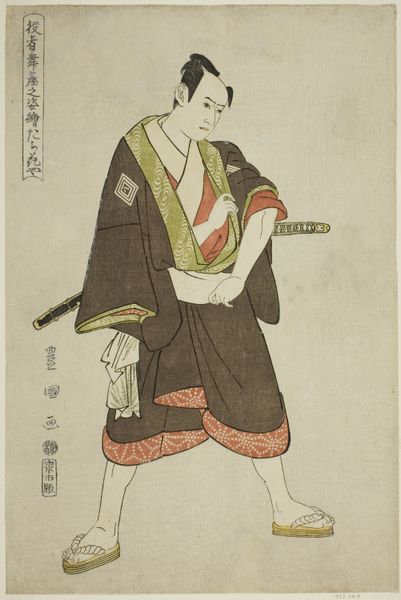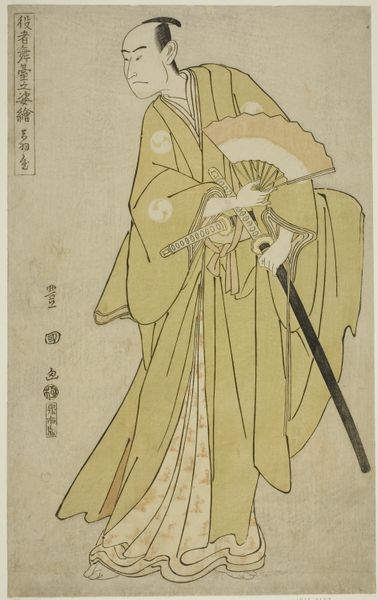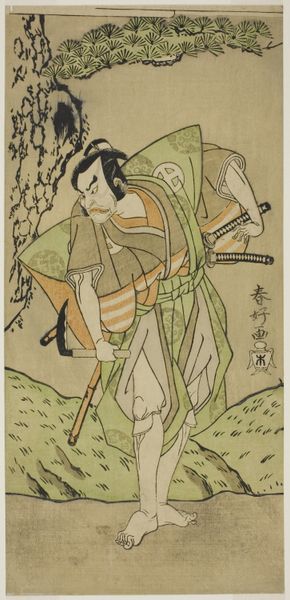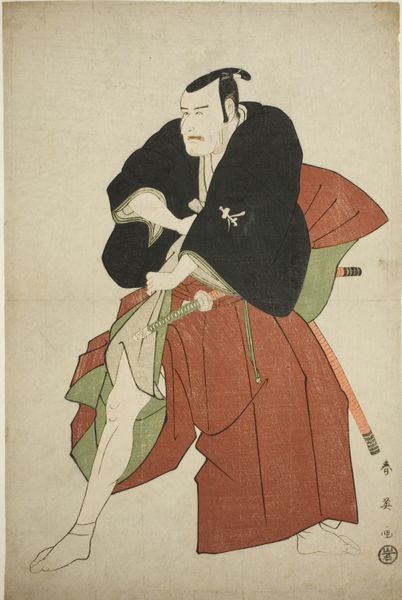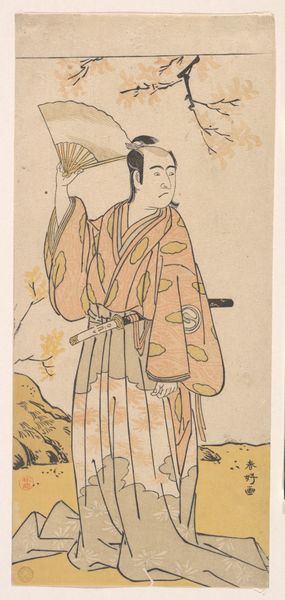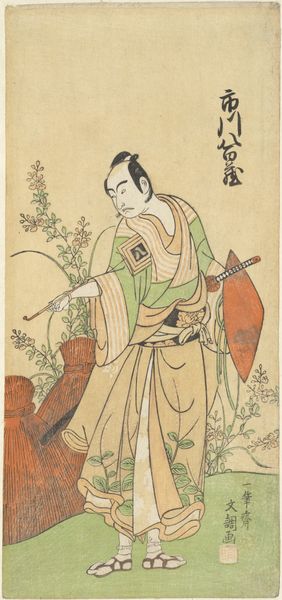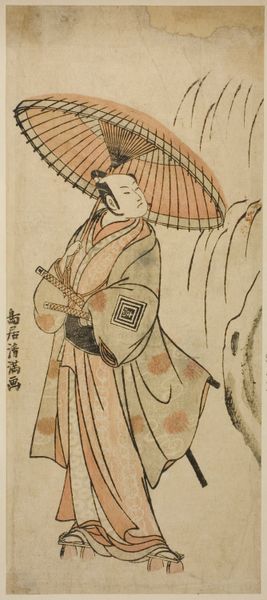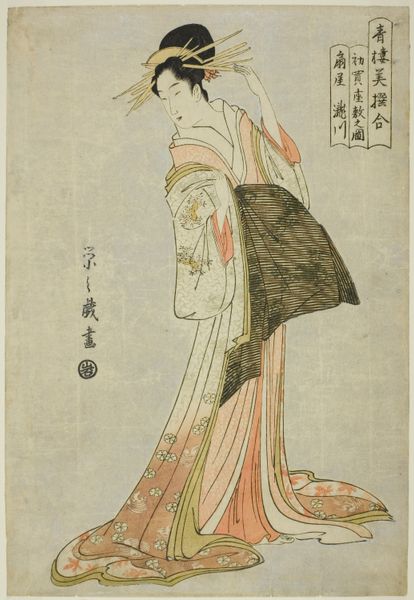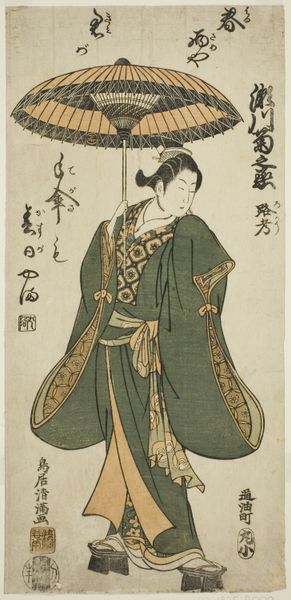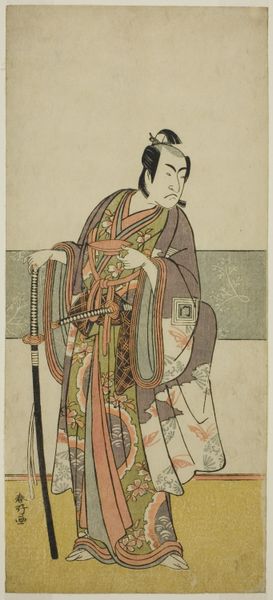
Yamatoya: Bando Mitsugoro II as Ishii Genzo, from the series "Portraits of Actors on Stage (Yakusha butai no sugata-e)" 1794
0:00
0:00
print, woodblock-print
#
portrait
# print
#
asian-art
#
ukiyo-e
#
figuration
#
woodblock-print
Dimensions: 35 × 23.1 cm (13 3/4 × 9 1/16 in.)
Copyright: Public Domain
Curator: This is a woodblock print from 1794 by Utagawa Toyokuni I. It’s titled “Yamatoya: Bando Mitsugoro II as Ishii Genzo, from the series Portraits of Actors on Stage.” What strikes you about it initially? Editor: The figure's tension is palpable; the slight forward lean, the focused gaze, and the way he firmly grips the sword... it suggests a moment right before action, but also inner turmoil. There's something both theatrical and psychologically intense. Curator: Exactly! It captures a pivotal moment from Kabuki theater. Utagawa was renowned for immortalizing famous actors and scenes. This print isn't just about the actor Bando Mitsugoro II, but about the character Ishii Genzo, within the play. It speaks volumes about the status of actors and the theater itself as influential forces within Japanese society at the time. These prints made celebrity accessible to the masses. Editor: Thinking about representation, the figure embodies a particular type of masculine performance popular on stage. Is there an element of coded messaging at play? Are specific viewerships being reached or challenged with this specific actor in the character he plays here? Curator: Definitely. Think of it within the Ukiyo-e tradition, the “pictures of the floating world.” There was a freedom of expression and the examination of social and gender roles. Actors were often trendsetters, their portrayals influencing fashion and behavior. It challenged the rigid class structures of the Edo period in very subtle yet poignant ways. And prints such as these played a critical role. Editor: That helps clarify the cultural context around gender. But what about the technique and materials of the print? What do they tell us about how art reached audiences then? Curator: The medium itself is important. Woodblock printing allowed for mass production, making art affordable and accessible. The vibrant colors, achieved through layered printing from separate blocks, add to its dramatic flair. This blend of accessibility and artistry democratized image production. The scale of these images made collecting very popular in different demographics, in line with today's print media, Editor: Fascinating, viewing it now I have new perspectives about Kabuki as political platform as I can see that these popular Utagawa prints captured more than a simple portrait. Curator: Precisely, they offered an accessible and reproducible glimpse into both celebrity culture and subtle social critique.
Comments
No comments
Be the first to comment and join the conversation on the ultimate creative platform.
